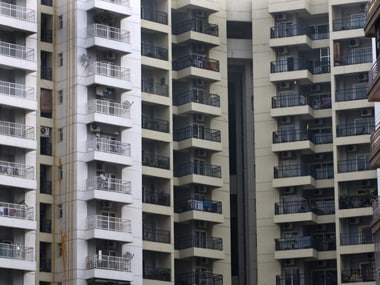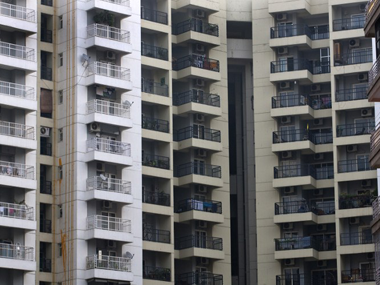Often, how a particular industry shapes up depends on government’s initiatives and interventions – largely done through new sector-specific policies as well as tweaking older ones to better suit the changing business environment. While the government’s role is important, it is the market conditions, geopolitical events, socio-economic changes in population and the element of time itself that are fundamental in evolution of industrial sectors, especially so, in the case of developing economies like India. Given that real estate is a major industry across the world, there has been a constant focus in many countries to have more transparency in the sector through regulations and technology. India too has seen many policies in recent years but certain milestones are spread over decades. As the country will soon complete seven decades of independence, it’s worthwhile to remember the milestones that have had a long lasting impact on India’s real estate industry: [caption id=“attachment_3319022” align=“alignleft” width=“380”]  AFP[/caption] 1) The new capital cities of Chandigarh and Gandhinagar were formed in 1952 and 1960 respectively. These were the first, and rare, occasions of planning entirely new cities in the country. 2) The Maharashtra Regional and Town Planning Act, 1966, first incorporated the practice of development plans and town planning. The Planning Commission also issued its first guidelines for district planning in 1969, which led many states to formulate district plans. However, except a few excellent examples, these initiatives didn’t yield positive results. 3) The Urban Land (Ceiling and Regulation) Act was enacted in 1976 to curb speculative hikes in land prices in urban areas and to provide low-income housing. However, because of poor implementation, it ended up worsening the situation of availability of land for social housing and social infrastructure in urban areas and eventually got repealed in all states but West Bengal and Kerala. 4) The government started setting up institutions such as the Housing and Urban Development Company in 1970, City and Industrial Development Corporation in 1971, the Mumbai Metropolitan Region Development Authority in 1975, National Housing Bank in 1988, and the Housing Development Finance Corporation in 1994, to strengthen the residential real estate industry. 5) In the backdrop of a looming fiscal deficit crisis, the economy was liberalised in 1991 through reforms, which set in motion its modernisation process. This created newer job opportunities, and gave a big market of consumers, access to many products and services for the first time. This led to entry of multi-national corporations into India in a big way, and brought a new type of demand- contemporary world class office space. 6) The phase of 1994-99 marked the completion of India’s first property cycle as the market, which was opened up in post liberalisation reforms saw property prices go up for the first time, thanks to NRIs and foreign capital. However, the realty market tapered off post-1995 due to inherent inefficiencies. With the advent of the Asian Financial Crisis in 1997-98, foreign capital got wiped out and growth in capital values came to a halt altogether. 7) The idea of commercialisation of airspace above transit routes was first introduced at Vashi station in 1992. Other stations such as Sanpada, Juinagar, Nerul and CBD Belapur – on the same railway line – followed in Vashi’s footsteps but met with lesser degrees of success. However, the latest transformation of Seawoods-Darave in 2017 railway station has met with phenomenal success. 8) India’s self-discovery as a global force in the software world got global recognition thanks to the Y2K bug that was another turning point for real estate industry as well. More foreign companies started setting up offices in cities like Hyderabad and Bengaluru in the post-Y2K era, which led to growth in these cities’ commercial and residential real estate. 9) Foreign direct investment (FDI) in real estate was first allowed in the year 2005, which opened up newer ways of funding and led to maturing of the industry in terms of business practices and product offerings. The FDI regime has been further liberalised in recent years leading to record private equity inflows and entry of foreign developers. 10) Just before the turn of the millennium, Indians got introduced to the concept of organised retail through the first mall: Spencer Plaza in Chennai; followed by Crossword in Mumbai and Ansal Plaza in Delhi. From the early 2000s, there has been a spurt of mall developments across the country. 11) The government approved the restructuring and modernisation of brownfield airports such as Mumbai and Delhi as well as greenfield airports at Bangalore and Hyderabad through the public-private partnership model in 2006. This led to the introduction concept of airport cities and airport precinct real estate. 12) The collapse of Lehman Brothers in 2008 triggered a panic, along with the sub-prime crisis leading investors to scout for rationality in investments across asset classes. The ensuing economic slowdown and risk of job losses made it difficult for investors to exit from their stakes in Indian real estate. The global financial crisis, however, had a big impact on commercial realty in India and a limited impact on residential realty in the country. Limited in the sense that the price fall led to quick sales and India’s residential market bounced back sooner than most expected. 13) The Real Estate Regulation (and Development) Act, commonly called RERA, has come into effect from 1 May, 2017, to ensure that home buyers are not taken for a ride by unscrupulous developers. This landmark Act will make home buyers confident, empowered with information and well-protected and make the non-serious players disappear from the highly-fragmented residential real estate industry. 14) The Real Estate Investment Trusts (REITs) were first opened up in 2014 and the first REIT is due for launch soon and would allow small-ticket investments in commercial real estate of the country. Given the expanding universe of Grade-A office properties in Indian cities as well as rising rentals across their micro-markets, REITs offer an attractive way to investors to trade in prime commercial real estate. (The writer is National Director – Research, JLL India)
Foreign direct investment (FDI) in real estate was first allowed in the year 2005, which opened up newer ways of funding
Advertisement
End of Article


)




